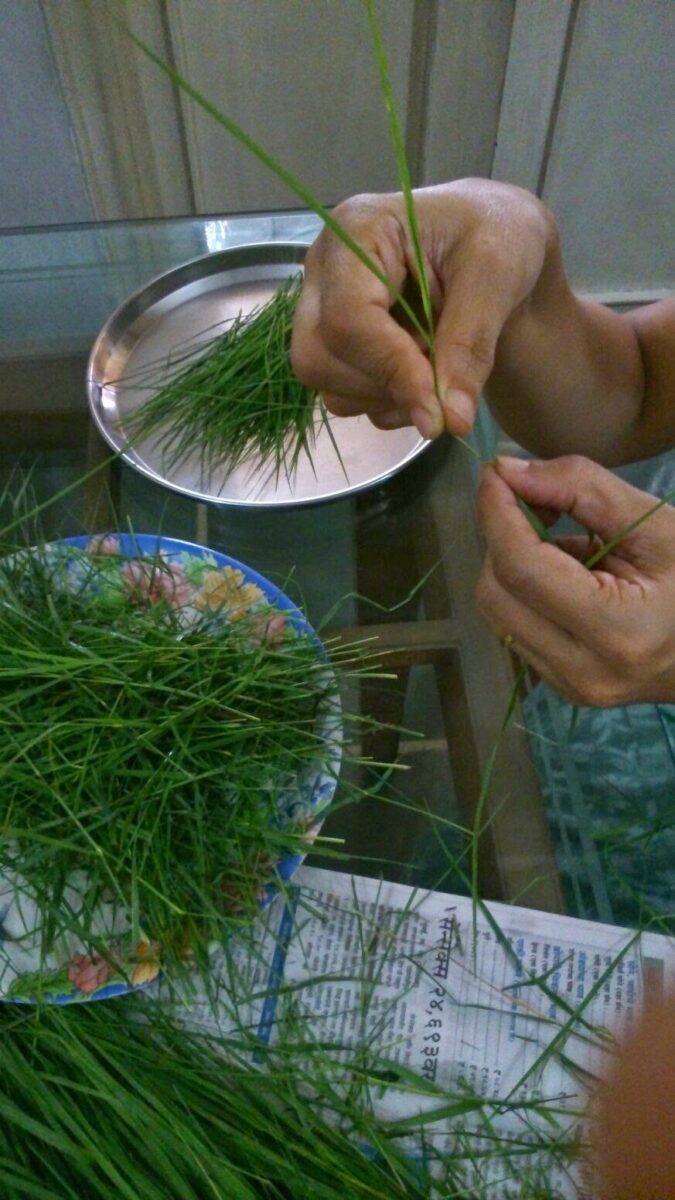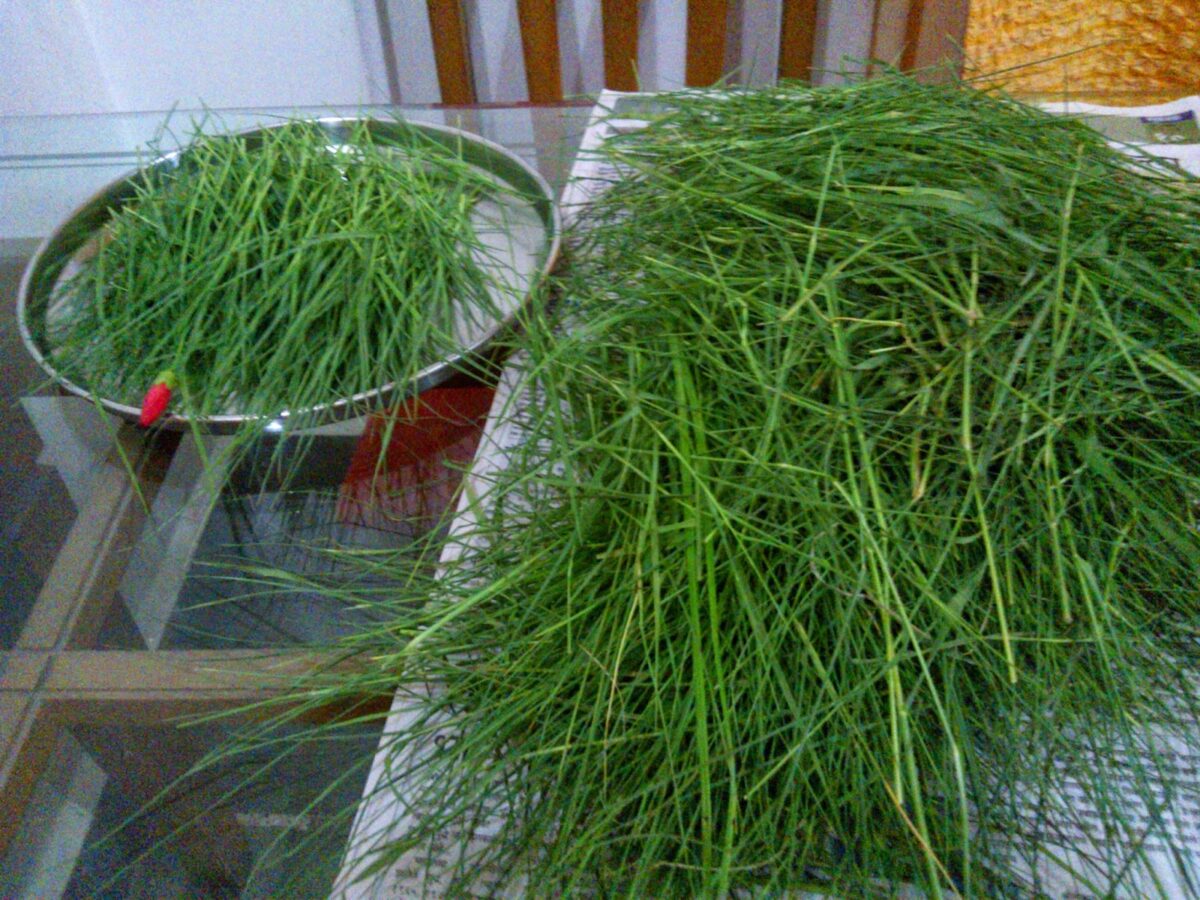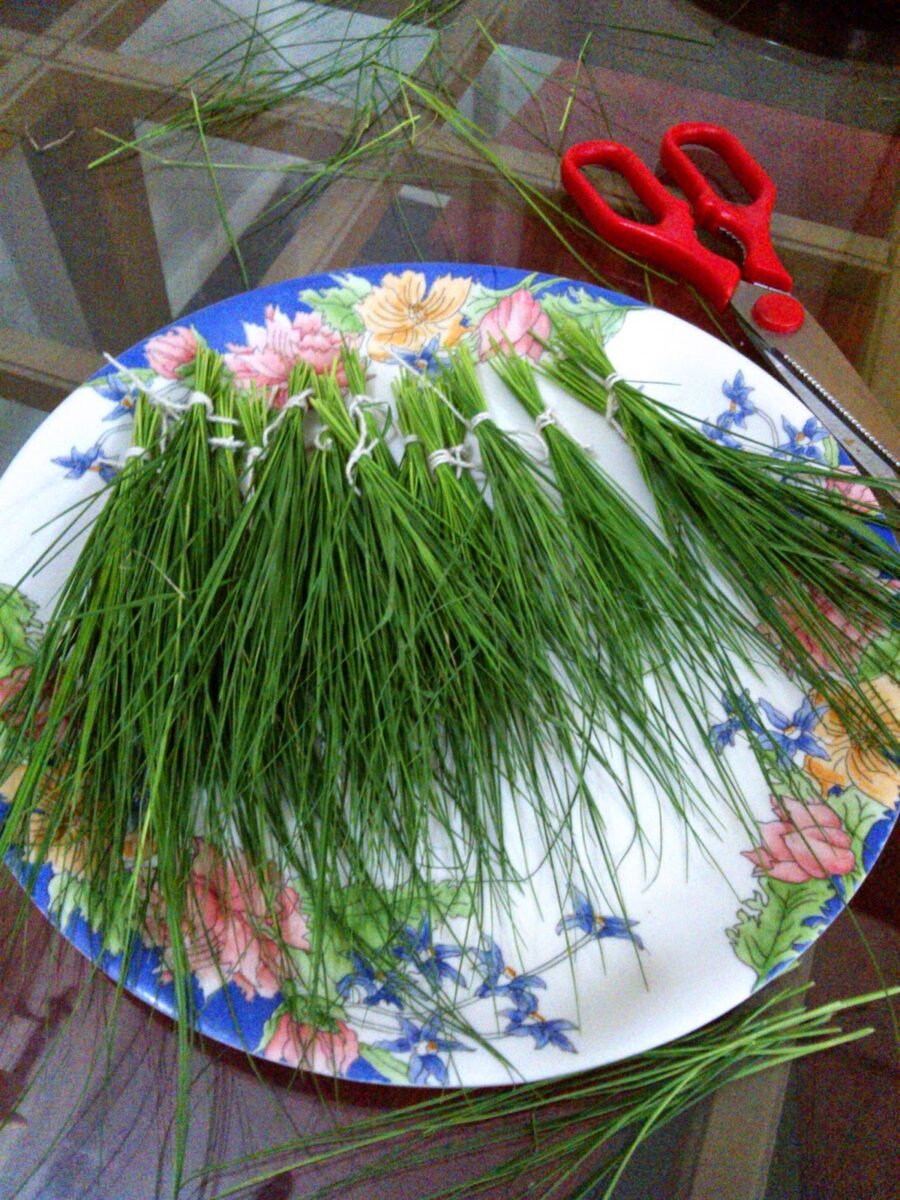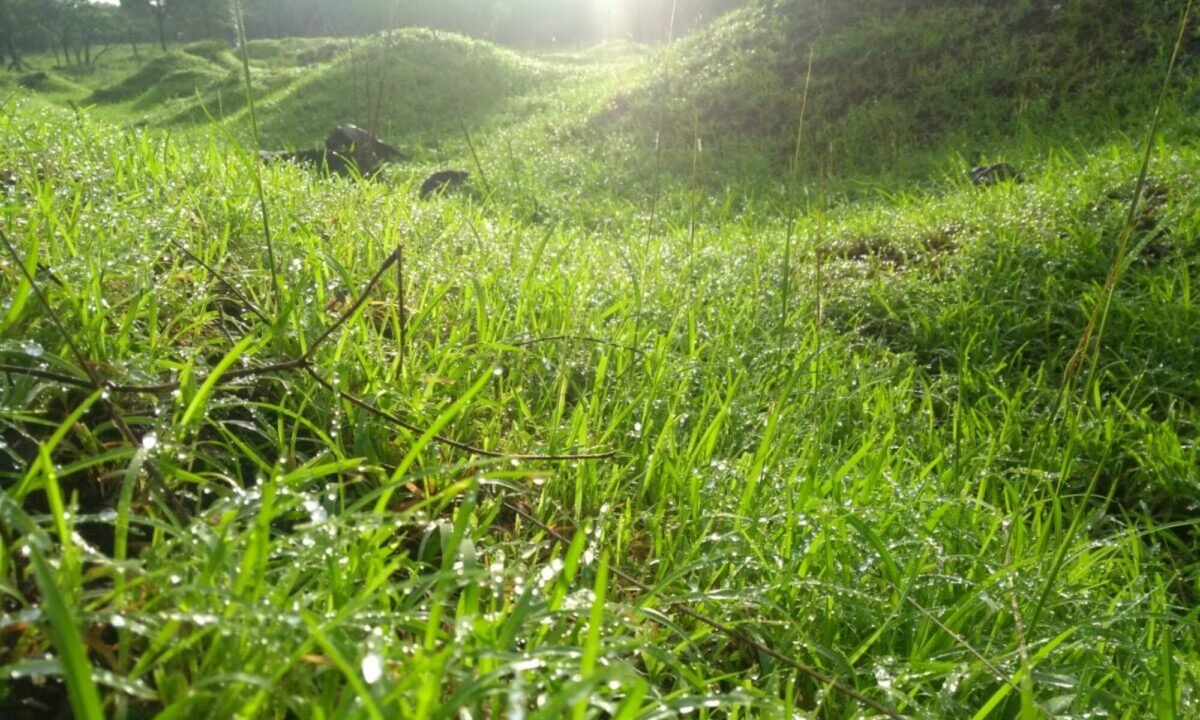The Durva to be offered is the tender shoot of grass with only three terminal blades including the new shoot. Usually a bunch of 5,11 or 21 Durva are offered. Panicum dactylon, Imperata cylindrica, Desmostachya bipinnata and Cynodon dactylon are some grass species identified as sacred grass.
In bygone days, possibly each and every household had a garden or at least a place where people could visit to pluck Durva. So-called development in urban Indian cities has created a concrete jungle with almost no gardens. The only source for Durva is the market where one can buy bunches of grass, which cannot really be offered to the God. Ideally the grass should be sorted out, almost akin to picking out leaves from a bunch of Fenugreek leaves! Its not a good idea to think about the origins of the grass, who or what has walked over it. One can simply wash the ready Durva before offering it to Ganesh.
It took me almost four hours to sort a bunch of grass into Durva for offering.
 |
| Each Durva is carefully separated into a steel plate |
Each twig has to be carefully examined and cut out at the
correct spot (so only the terminal three shoots are present). At this
stage the twig must be handled very carefully else a blade may break off
which means the Durva cannot be used.
 |
| Each twig of grass is assessed. |
 |
| Finally: the small pile of Durva and a big pile of blades of grass |
End result, 16 bunches of 21 Durva each! A time intensive, delicate process but strangely satisfying and enjoyable!
 |
| Each bunch has 21 Durva.The string must be firm but not too tight else the delicate stems will break. |
An alternative to this is to get a bunch of pure silver Durva that are available at most jewelers in Pune.
Have a happy, noise-free, eco-friendly Ganesh Ustav!
Here is a link to an article by Devdutt Pattanaik in Times of India about the legends associated with Durva.
